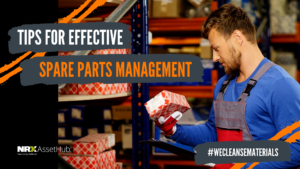Obsolete parts in your EAM/CMMS system and in inventory can pose problems for your maintenance activities if they aren’t managed proactively. Obsolete parts occur naturally over time as vendor’s release updated versions of equipment and recommend new spare parts for old equipment.
Factors Causing Obsolescence
Poor Demand Projections
Predicting demand for spare parts is complicated and requires both expertise and effective use of your EAM/CMMS system. If demand for a spare part is lower than anticipated, it can become obsolete before all the parts in inventory are used.
New Equipment
Improvements in equipment may result in some of the spare parts from older models becoming obsolete. Vendors may also improve some of the parts for existing equipment and recommend against using older versions of the parts rendering them effectively obsolete especially if there is a safety concern.
High Lead Times
Parts with high lead times that you need in inventory increase the risk of the part not getting used before it becomes obsolete.

Issues Caused By Obsolescence
Delays
If you aren’t proactive in managing obsolete parts then maintenance activities can be delayed and result in unecessary downtime and lost revenue.
Stranded Inventory
If obsolescence of parts isn’t managed efficiently you can end up with expensive stranded inventory that will need to be written off.
Solution
Find out how you can manage obsolescence of spare parts more efficiently and proactively.
Contact us to book a demo and learn more.
Tips For Effective Spare Parts Management
More Ways to Save Money with a Materials Data Cleanse

Optimizing Your Spare Parts Data With a Material Cleanse
Share this article



